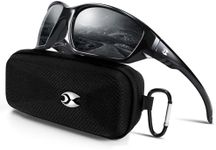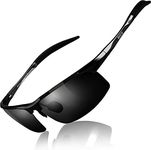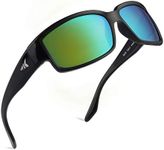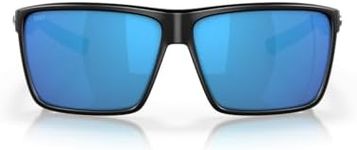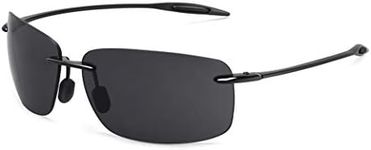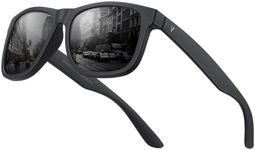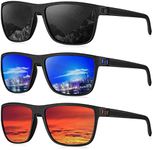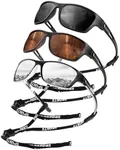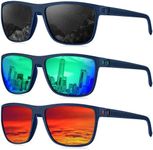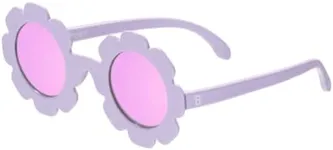Buying Guide for the Best Fishing Polarized Sunglasses
Choosing the right pair of fishing polarized sunglasses can significantly enhance your fishing experience. These sunglasses are designed to reduce glare from the water, allowing you to see beneath the surface more clearly. When selecting a pair, it's important to consider several key specifications to ensure they meet your needs and provide the best performance for your fishing activities.Lens MaterialThe lens material of polarized sunglasses is crucial for durability and clarity. Common materials include polycarbonate, glass, and plastic. Polycarbonate lenses are lightweight and impact-resistant, making them ideal for active fishing. Glass lenses offer superior clarity and scratch resistance but are heavier. Plastic lenses are the most affordable but may not provide the same level of durability or optical quality. Choose a lens material based on your preference for weight, durability, and clarity.
Lens ColorLens color affects how well you can see in different lighting conditions. Gray lenses are versatile and reduce overall brightness without distorting colors, making them suitable for bright, sunny days. Brown or amber lenses enhance contrast and depth perception, which is beneficial in variable light conditions. Yellow lenses are great for low-light conditions, such as early morning or late evening fishing. Consider the typical lighting conditions you fish in to select the appropriate lens color.
UV ProtectionUV protection is essential for safeguarding your eyes from harmful ultraviolet rays. Look for sunglasses that offer 100% UV protection to ensure your eyes are fully shielded from both UVA and UVB rays. This is important for preventing long-term eye damage and maintaining eye health during prolonged exposure to sunlight.
Frame MaterialThe frame material impacts the comfort, durability, and weight of the sunglasses. Common frame materials include plastic, nylon, and metal. Plastic frames are lightweight and affordable but may not be as durable. Nylon frames are flexible, durable, and resistant to extreme temperatures, making them ideal for outdoor activities. Metal frames are sturdy and offer a premium feel but can be heavier. Choose a frame material that balances comfort and durability based on your fishing environment.
Fit and ComfortA good fit is essential for comfort and effectiveness. Sunglasses should fit snugly without being too tight, and they should stay in place during movement. Look for features like adjustable nose pads and temple tips to customize the fit. Wraparound styles can provide better coverage and reduce peripheral light. Consider trying on different styles to find the most comfortable and secure fit for your face shape and size.
Polarization QualityThe quality of polarization determines how effectively the sunglasses reduce glare. High-quality polarized lenses will significantly reduce glare from reflective surfaces like water, enhancing your ability to see fish and underwater structures. Test the polarization by looking at reflective surfaces and ensuring the lenses effectively cut down the glare. Investing in high-quality polarization is crucial for a better fishing experience.
